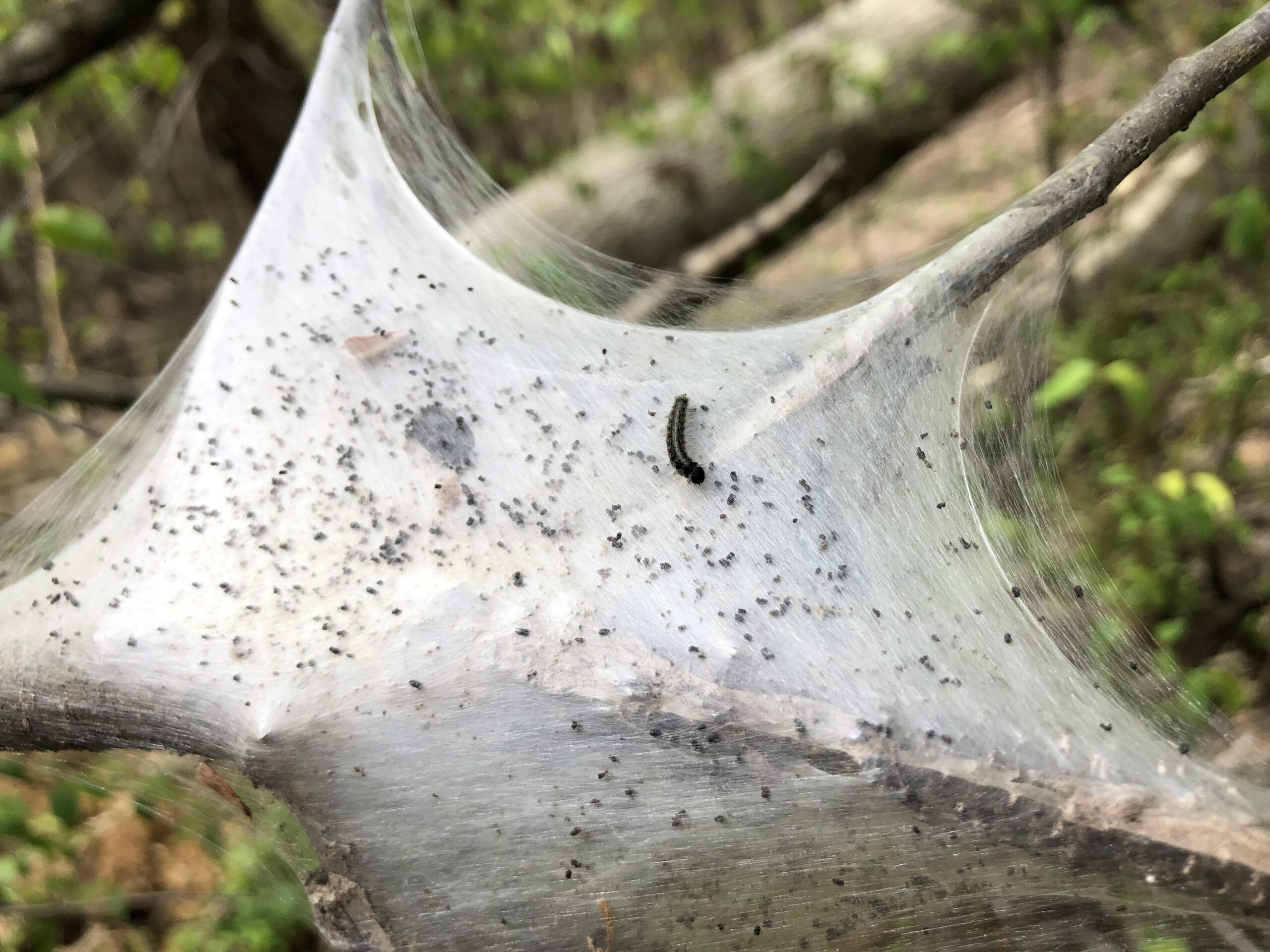With spring comes the return of a conspicuous and interesting pest insect, the eastern tent caterpillar, Malacosoma americanum. These caterpillars stay together after hatching from the egg mass their mother deposited on the host tree, usually a cherry, but also other trees in the same family, such as crabapple, hawthorn, apple, peach or pear.

A communal tent woven by a family of caterpillars. Compare the size of the tent to the single, early larvae visible here.
The tents occupy the crotch of a tree and spin silk threads that create a simple tent that serves to protect them from the weather and natural enemies. Every day, the caterpillars expand their shared tent by building a new sheet of silk outside the existing structure, occupying the spaces between successive sheets. One of the earliest of the spring caterpillars, they overcome cool temperatures in part because the tent acts as a little greenhouse and raises their body temperature when they are inside such that digesting the leaves they have eaten is much more complete and efficient than at the cooler ambient temperature.

Larvae will grow to be about two inches long and are colorful. The stiff hairs make them hard for birds to handle, although cuckoos are specialists in feeding on them.
Caterpillars leave the tent two or three times a day to search for leaves on the branches nearby, usually around dawn, in early afternoon, and in the evening. If a caterpillar finds a good bunch of leaves, it will lay down a silk trail marked with pheromone on its way back to the tent. Then next time the caterpillars leave the tent, they will prefer to follow such a trail to the food the brother or sister caterpillar found. This greatly increases their efficiency in feeding the whole brood, and also explains their ability to quickly defoliate a tree. Trees usually rebound with a new set of leaves, but the damage to ornamental trees or fruit trees is undesirable.

These caterpillars share defense as well as the nest and food resources. When disturbed by a potential parasite or predator, the caterpillars snap their heads around suddenly, creating a moving target and simultaneously alarming others, who then take up the same behavior. These behaviors make this species the most social of caterpillars, but they go one step further. If there are multiple egg clusters on a single tree, which can happen when there is an outbreak of these moths, the caterpillars may join forces and combine with another family nearby to create an even larger cooperative team.

During an outbreak of tent caterpillars, trees may be completely defoliated, as shown here. The caterpillars may even eat themselves out of house and home.
Eastern tent caterpillars are not the same as the fall webworm that people sometimes confuse with them. In addition to appearing later in the season, the webworm includes foliage in its silk nest, whereas the tent caterpillar does not, building in the crotch of several branches.

The adult of the tent caterpillar is a fairly non-descript night-flying moth.

